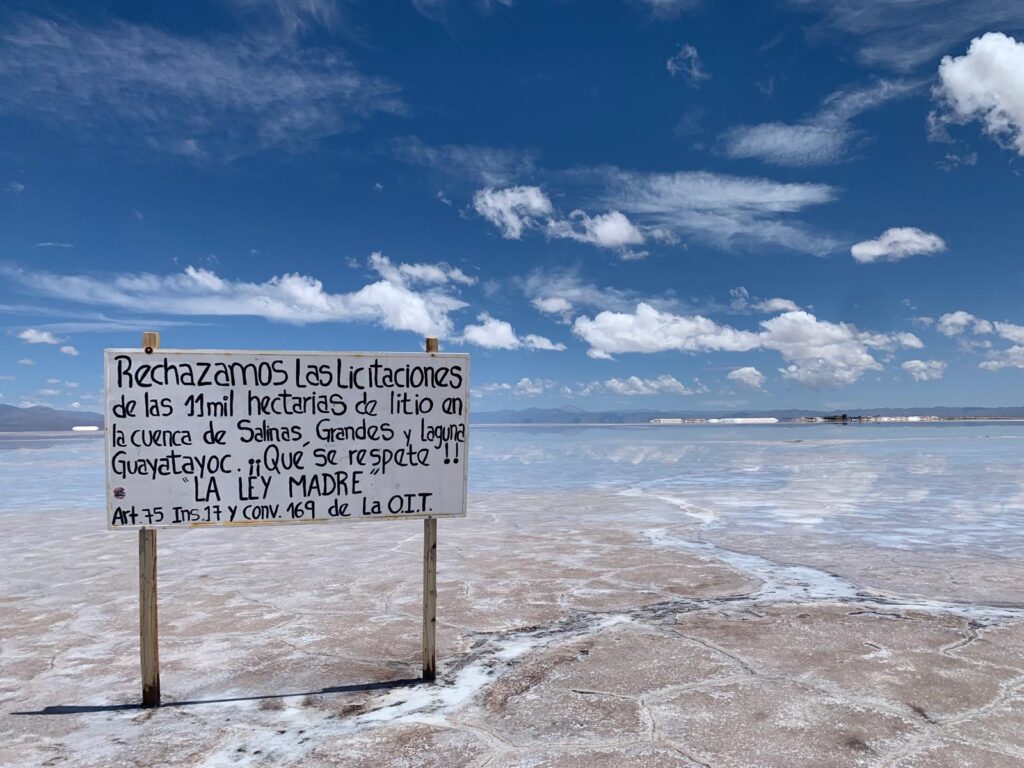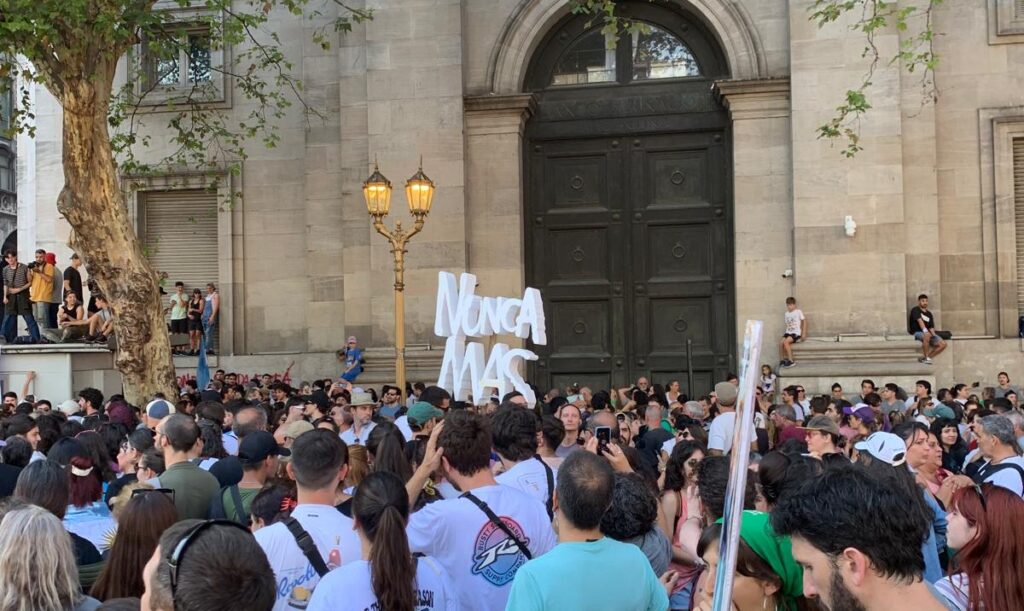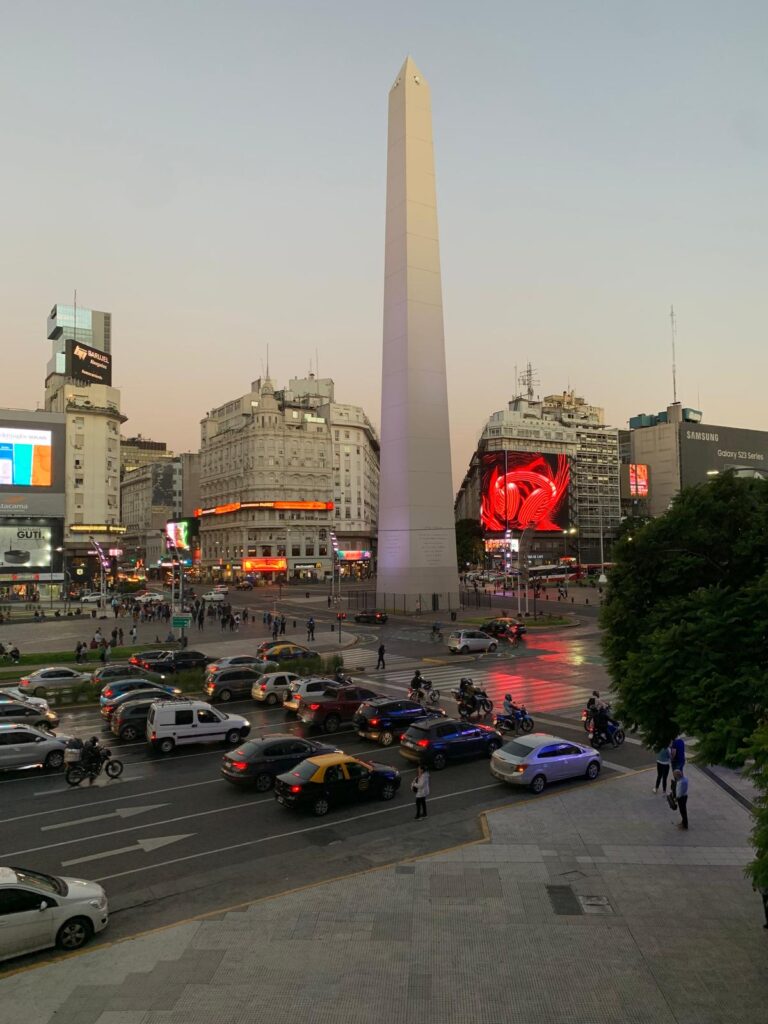International Women’s Day
8 March was International Women’s Day. In the days leading up to it, journalist Mariana Iglesias wrote that the past few years the enthusiasm for 8M marches had subsided, as many feminists felt that they had ‘won the battle’ after the legalisation of abortion. However, a few weeks ago, La Libertad Avanza, the party of president Javier Milei, made it public that they want to penalise abortion again. The news mobilised thousands of people to go marching all over the country. I wasn’t in Buenos Aires myself on 8 March, as my parents and I were still travelling through the north. However, throughout our stay in Tilcara and the region around Salta we noticed that intersectional feminism is not only celebrated on 8 March. During our visit to the salt flats in Salta as well as the archeological museum and the precolombian ruins in Tilcara, we met many activists fighting for indigenous rights and women’s rights. Refreshing experiences for someone from a relatively politically passive country like Belgium, where even 8M never really stands out as a special day.

First day of school and a history lesson
Last week was my first day at the university, where I received a very warm welcome from my research stay supervisor and the people in the research group. They gave us a tour of the campus, which included a short history lesson. The campus of Humanities and Educational Sciences of the Universidad Nacional de La Plata is located in Ensenada, a municipality close to the city of La Plata. In the twentieth century, it used to be a marine base, and during the dictatorship it was used as a clandestine detention centre. After the dictatorship, it remained unclear what would happen to this lieu de mémoire. At some point, the premises were bought by a multinational company that wanted to build a supermarket and cinema there. The Ensenada community and human rights organisations in La Plata protested vehemently, for two reasons. First, they worried the independent commerce would suffer greatly and eventually disappear. Second, they deemed it unacceptable that such a symbolic place of problematic history would be erased by something as banal as a supermarket. The governing bodies agreed, and the supermarket plans were cancelled.
To turn this historical place into a university campus, a place for learning and critical reflection, seemed a more appropriate solution indeed. Today, remnants of the detention centre are still visible. For example, the university preserved the centre’s outer walls with barbed wire on top.
24M
Speaking of the dictatorship, 400.000 people gathered in Buenos Aires on 24 March to commemorate the period of state terror between 1976 and 1983. On 24 March 1976, the military overthrew the peronist government and installed a dictatorship. This was not the first military dictatorship in Argentina, but it was the last one, and an immensely brutal one at that. Those who opposed the regime were kidnapped and tortured in clandestine detention centres. Some were released after torture, but 30.000 of the kidnapped people were killed by the military regime, and to this date many families still do not know what happened to their family members.
To commemorate the 30.000 desaparecidos, and to denounce the human rights’ violations that took place between 1976 and 1983, every year people march to Plaza de Mayo. This is where the residential palace, the Casa Rosada, is located, and it is also the place where the Madres de Plaza de Mayo, mothers of disappeared people, have been protesting every Thursday during afternoon since 1977. On Sunday 400.000 people marched with the Madres, which is apparently a higher number than the years before, which likely has to do with the government’s negationist attitudes towards the dictatorship.

What I’m Reading and Watching
My first weeks included various museum visits and I even went to see a silent film from 1922, En pos de la tierra (my loved ones know that this is a big deal).
At the Teatro San Martín, I went to see Andrea Bonelli’s Borges y yo, where she performed excerpts of Borges’s stories, alternated with tango music. Although this sounds a bit like an intellectual tourist trap, it was a very inspiring and serene evening, and the ideal experience to start off my cultural semester in Buenos Aires.
My current public transport book is Mujeres by Eduardo Galeano, which is written in the same vein as Espejos. Una historia casi universal, in the sense that it conveys optimistic and hopeful versions of stories that could also be interpreted in a more pessimistic way. On every page, he celebrates a different woman by narrating their life’s story, so it is a read well-fitted for Women’s History Month.

Last Saturday, I participated in my first book club in Buenos Aires. It takes place monthly in the La Libre book shop in San Telmo, and was founded three years by two lawyers who like to read. In preparation, we all read In vitro, an essay on in vitro fertilisation by the Mexican author Isabel Zapata. The essay is both an emotional account of the desire to be a mother, and the informative, almost clinical explanation of the in vitro process. For me, In vitro echoes a little bit of Andrés Neuman’s Umbilical regarding the anticipatory feelings of parenthood, and Guadalupe Nettel’s La hija única in how it discusses various forms of mothering.
In the book shop’s back room on a warm autumn afternoon, twenty women and a few men gathered with cups of mate and banana bread, eager to exchange reading experiences and reflections on motherhood, relationships, and the passing of time. We left the shop at dusk with fresh recommendations added to our to-read pile. I’m already looking forward to next month’s book club.

Moving to Buenos Aires from Edinburgh, which often feels more like a village than a city, is a big leap. Add an unstable economic situation to the equation, and it can easily get overwhelming. However, immersing myself in the city’s culture has led me to kind and wise people who have showed me a beautiful and mesmerising Buenos Aires. I cannot wait to explore more, but next week I will be travelling to Patagonia, and discover a whole other side of Argentina!



Leave a Reply